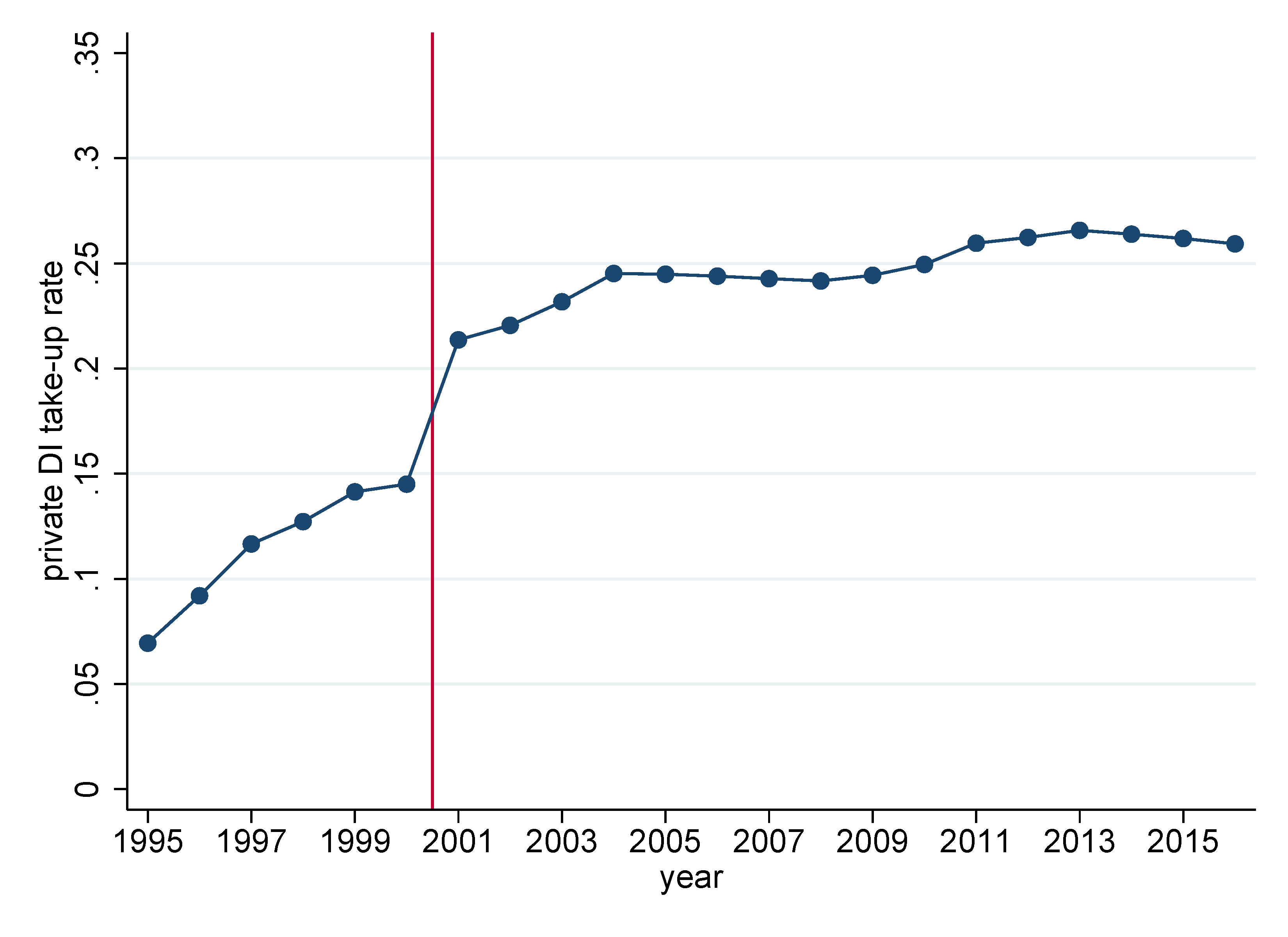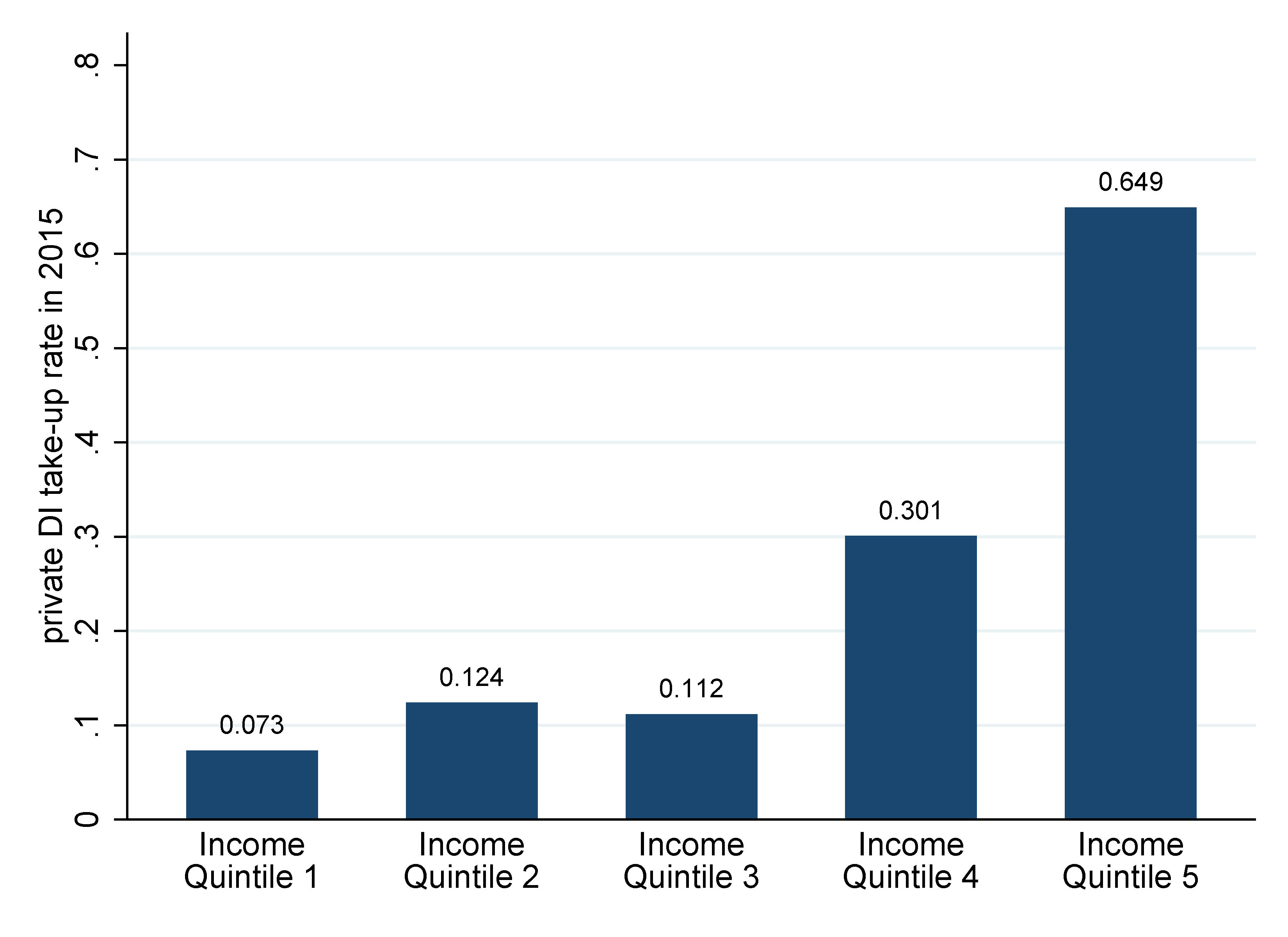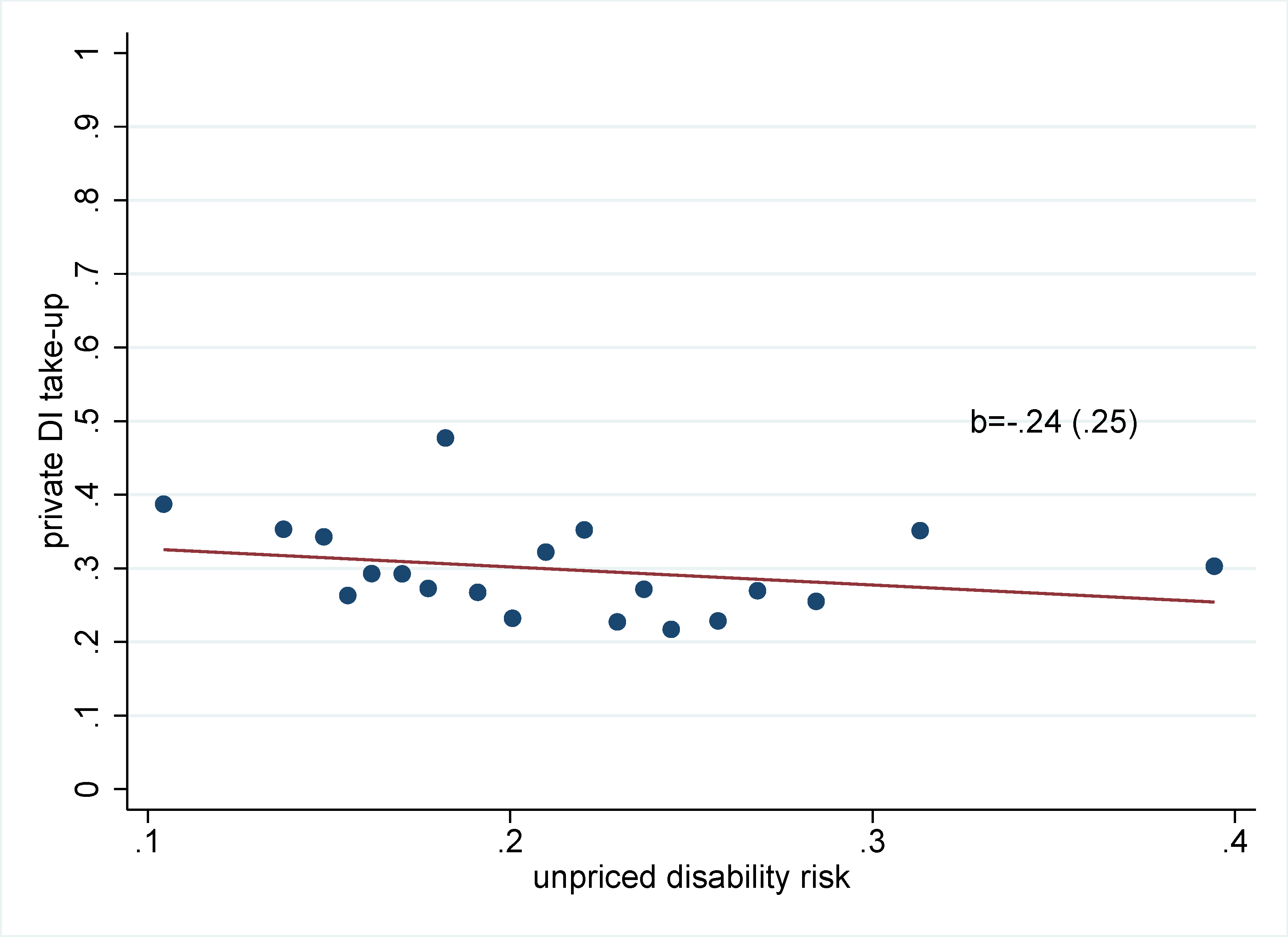The past decades have seen a rapid rise in the number of individuals receiving public disability insurance (DI) benefits across the developed world. This growth has made DI one of the largest social insurance programmes in OECD countries, with average spending of 2% of GDP (OECD 2019). Due to the increasing fiscal burden, many governments face pressure to enact reforms reducing spending on public DI.
As a consequence, some economists and policymakers have proposed a larger role for private DI (e.g. US Government Accountability Office 2018). In fact, sizable private DI markets already exist in countries such as the US and Germany. Opponents of privatisation point out several potential problems in private DI markets, including inefficiencies due to adverse selection, equity concerns, and behavioural biases leading to sub-optimal private insurance choices (Liebman 2015).
Our latest research sheds new light on the functioning of private DI markets and discusses the welfare effects of a larger role of private DI in the face of public DI cuts. In a recent paper (Seibold et al. 2022), we investigate these questions in the context of a large reform in Germany that partly privatised DI provision for younger workers. The reform of 2001 abolished own-occupation DI coverage, which insured workers against the risk of not being able to work in their previous occupation from the public DI system. After the reform, public DI only covered the risk of general disability, which is based on stricter eligibility criteria, namely being unable to work in any occupation. However, workers have the option to purchase private insurance against their own-occupation disability if they wish to compensate for the loss of public DI coverage.
We establish three main empirical findings using a combination of micro data on private insurance contracts and administrative data from the public DI system. First, we document that the reform indeed ‘crowds in’ private insurance. Figure 1 shows overall private DI take-up (the fraction of workers covered by private DI) over time. The figure clearly indicates that the private DI market grew around the time of the reform. When comparing private DI purchases of younger birth cohorts subject to the reform to unaffected older workers, our analysis confirms that much of this observed growth can be attributed to a causal effect of the reform. However, the figure also suggests that the level of private DI take-up stalled at 26% about 15 years after the reform. Thus, while all workers were insured against own-occupation disability before, only about a quarter took up private insurance against this risk after 2001.
Figure 1 Private disability insurance take-up over time
Note: The figure shows the fraction of workers with private DI. The vertical line demarcates the 2001 reform.
Second, we find that modest overall private DI take-up masks important heterogeneity across socioeconomic groups. Figure 2 shows private DI take-up by income quintile as an example. Among the top 20% of earners, almost two-thirds were covered by private DI. By contrast, only 7% to 12% of individuals had private insurance in the bottom income groups. We find similar patterns by education: while the majority of highly educated individuals purchased private DI, only a small minority among lower-educated groups were privately insured. An important factor behind differences in take-up lies in the pricing of private DI, which relies on risk-rated premiums. Workers who are charged lower private DI premiums because they work in less risky occupations are more likely to purchase private DI. Since low-income and less educated workers are more likely to work in high-risk occupations, this partly explains lower private DI take-up among these groups.
Figure 2 Private disability insurance take-up by income
Note: The figure shows the fraction of workers with private DI in 2015 by income quintile.
Third, we investigate risk-based selection in the private DI market in more detail. The nature of risk-based selection is crucial in assessing the efficiency of private DI provision. Classic theories predict that private insurance markets suffer from adverse selection, whereby riskier individuals are more likely to purchase insurance, leading to inefficient under-provision of insurance (Akerlof 1970, Rothschild-Stiglitz 1976). To test for risk-based selection in the German private DI market, we implement a positive correlation test. This test estimates the relationship between private DI take-up and disability risk, given insurance prices – a positive correlation would indicate adverse selection. As Figure 3 shows, we do not find any evidence of adverse selection. The estimated correlation is insignificant and, if anything, slightly negative.
Figure 3 Testing for risk-based selection into private disability insurance
Note: The figure shows the correlation between private DI take-up and disability risk while controlling for private DI premiums. In this test, a positive correlation would indicate adverse selection into private DI.
In the last step of the analysis, we assess the welfare implications of this empirical evidence. The key question is whether it is preferable to provide DI partly via a private insurance market, like in the German setting after 2001, or whether DI should be fully mandated via social insurance. Our results are as follows.
If the main government objective is efficiency, a partial DI privatisation similar to the German reform improves welfare. As there is no significant adverse selection, there are no large price distortions in the private DI market. Thus, individuals who value extra DI highly enough purchase this coverage. Mandating extra DI coverage via social insurance would lead to large expenditures but entail relatively low gains because the individuals receiving extra coverage are those with low valuations who initially chose not to purchase privately.
There are, however, two important arguments against partial DI privatisation. First, some vulnerable groups, including low-income, low-educated, and high-risk workers, tend to be uninsured in the private DI market. If the government objective includes equity concerns, extra DI coverage received by these groups will have high social value, and providing public DI to everyone can provide a natural solution. Second, we provide suggestive evidence that high-risk individuals tend to underestimate their disability risk and thus purchase too little insurance in the private DI market. This type of behavioural friction also pushes in favour of a public DI mandate and against allowing for private insurance choice.
References
Akerlof, G A (1970), “The Market for ”Lemons”: Quality Uncertainty and the Market Mechanism”, Quarterly Journal of Economics 84(3): 488–500.
Liebman, J B (2015), “Understanding the Increase in Disability Insurance Benefit Receipt in the United States”, Journal of Economic Perspectives 29(2): 123–150.
OECD (2019), OECD Social Expenditure Database, Database.
Rothschild, M and J Stiglitz (1976), “Equilibrium in Competitive Insurance Markets: An Essay on the Economics of Imperfect Information”, Quarterly Journal of Economics 90(4): 29–649.
Seibold, A, S Seitz and S Siegloch (2022), “Privatizing Disability Insurance”, CEPR Discussion Paper No. 17568.
US Government Accountability Office (2018), “Social Security Disability Insurance – Information on Potential Implications of Expanding Private Disability Insurance”, Technical Report GAO-18-248.









